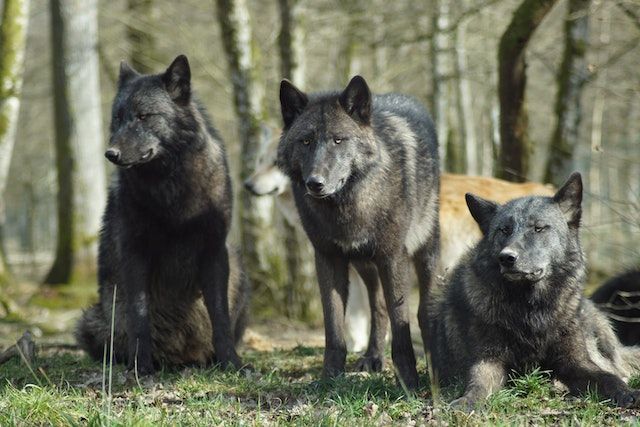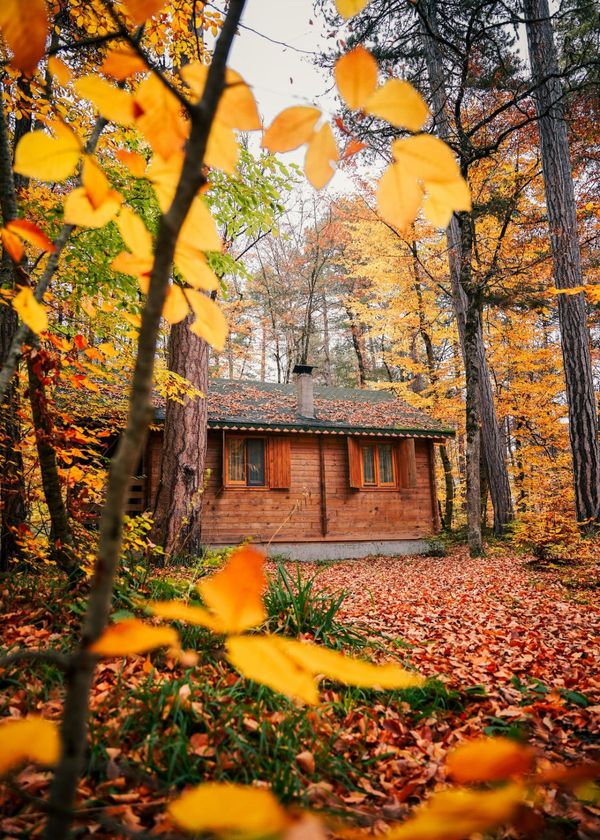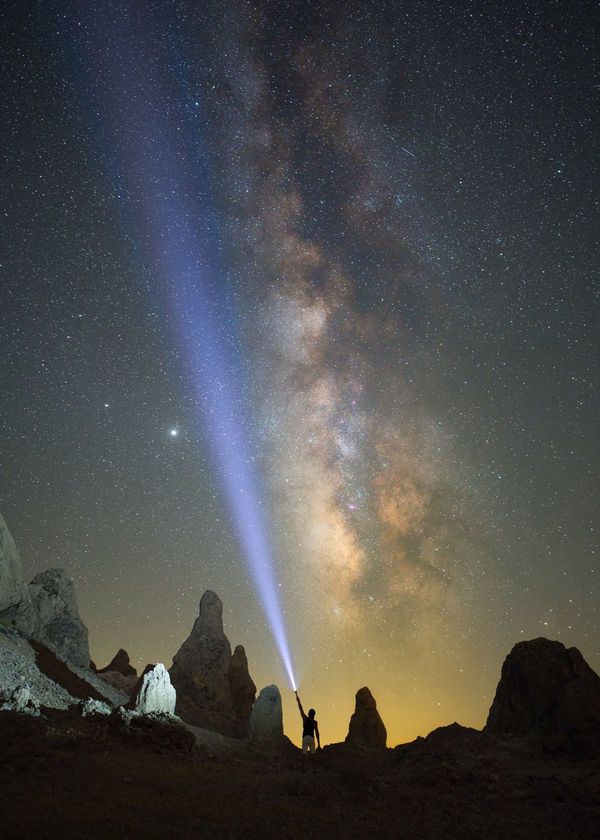Have you ever been curious about how trail cameras work?
Well, let us tell you – wireless trail cameras are the way to go! No more setting up a tangled mess of cords and wires. This technology allows these game cameras to be set up in even the most remote places thanks to their wireless capabilities.
Forget your troubles with cables as now you can get quality photos from any location without all that fuss. Images and videos will transmit directly from the camera so convenience and efficiency is guaranteed at all times! Outdoor exploration has never been easier than with a wireless trail camera.



What Is A Trail Camera
You don’t have to be a hunter to have fun with a trail camera. Monitoring your property with one (or a few) of these handy little gadgets is a fascinating hobby for birders, wildlife enthusiasts, kids, or just folk who enjoy being surprised at what goes on in their backyard after dark.
Also known as a trap, game, or wildlife camera, a trail camera is equipped with a passive infrared motion detector that triggers the shutter when an animal (or trespasser) walks into its field of view. Hunters use them to identify places to find game when the season starts, or to establish migration or feeding routes.
Birders like the close-up, freeze-frame images a trail cam can capture; a person holding a camera would scatter the birds, but an unobtrusive trail cam doesn’t bother them a bit.
How Do Wireless Trail Cameras Work
Wireless trail cameras have become increasingly popular in recent years thanks to their convenience and the many benefits that they offer. But how to they work?
Basically, wireless trail cameras use WiFi or cellular networks to transmit images and videos taken by the cameras to a remote location, such as a mobile device or computer. This technology allows you to monitor wildlife activity even when you're not physically present in the area.
One of the best things about wireless trail cameras is that they are incredibly easy to set up and use. You simply need to find a good position, install the camera, and then connect it to your chosen network. Once you've done that, you can access the images and videos captured by the camera via an app or online portal.
There are many different types of wireless trail cameras on the market, each with their own features and benefits. Some cameras use WiFi to connect to your home network, while others use cellular networks to send data directly to your phone or email. Some models offer features like infrared night vision or high-definition video capture, while others prioritize battery life or durability.
No matter what your requirements, there's sure to be a wireless trail camera out there that meets your needs. Whether you're a hunter, a wildlife enthusiast, or simply curious about the natural world around you, these cameras are a great way to stay connected to the outdoors.
How Does Trigger Speed Work
Movement triggers a trail camera’s shutter. The amount of time between the movement and when the photo is taken is called trigger speed. It’s easy to find cams that fire in half a second or less. Naturally, you want the photo to be captured or the video to start recording as quickly as possible, before the subject moves out of view.
A related measure is recovery time, or how long it takes for the camera to get ready to take another picture. Not every camera maker specifies recovery time, but it’s worth considering when they do.
It’s common for cams to offer a burst capability, firing off several shots in rapid succession, or a multi-shot mode with a selectable period of time between shots. You can also set the interval between triggered events, so your memory card doesn’t fill up with shots of the same show-off deer.
Also related to trigger speed is detection range: how close to the camera an animal must get to trigger the motion detector. Naturally, a longer (farther) detection range will capture more wildlife movement, but may fill your card more quickly.
What Is The Best Clothing To Wear Hunting
Dressing in the proper clothing when hunting can really make it or break it. When people think hunting, they often times think one of two things…camo patterns or blaze orange. This isn’t always the case though.
The best way to decide what color to wear hunting is to think about blending in with your surroundings. Another thing to consider is the type of material you’re wearing. Fleece is typically a safe bet because it is a quiet material and it allows you to come to full draw back without making a sound.
Thermal underwear is also a smart option because it will keep you warm, is incredibly breathable and is also flexible if you need to move quickly from tree house or between the brush.
A final consideration is what is covering your hands and face. For hunters with fair skin, the last thing you want is to be decked out in gear, then have the perfect animal get a glimpse of your hands or face and run.



Why Invest In Trail Cameras
Trail cameras have become an increasingly popular tool for viewing wildlife and are used in wildlife research to study animal activity and behavior.
With continuous improvements in camera technology, manufacturers have made trail cameras available commercially, and the products have become more affordable and much easier to use.
Trail cameras can be used for more than just nature viewing or scouting and can be a powerful management tool for landowners, land managers, and homeowners for security enhancement purposes.
Cellular trail cameras are a cost-effective alternative to installing home security cameras.
Trail Camera Features Guide
1. Image Quality
The resolution or quality of the picture seen on the camera is measured in mega pixels. The more MP the better the picture will be. Basic trail cameras start at 2MP and get to as high of a resolution as 20MP.
Having at least 7MP is recommended. But for capturing and studying game at night, nothing lower then 10MP is recommended.
2. Trigger Time
Trigger time is the time in which the camera detects movement and captures a picture of the movement. The less time the better the camera. Trigger time in cameras can range from 0.14 seconds to 4 seconds.
3. Battery and Power Options
Most brands offer a range of battery life between six months up to a year. Keep in mind the more tricks and features your camera has the more likely it is to drain the camera battery much sooner.
Look for cameras with at least eight sockets for AA batteries or rechargeable ones will be more expensive in the beginning but will last for years. Always try to go for a camera with a battery indicator included.
4. Detection Circuit
Detection circuit identifies the range (feet) in which the camera is able to detect motion and trigger the camera to capture a photo. The longer the range the better the camera and average range for most trail cameras is between 60-70 feet.
Field of view is another important element to take note of which will provide the width of the angels which the camera can detect movement. A wider field of view will aid you because the wider the shoot the longer time the game with be in camera view.
5. Memory
Measured in Giga Bites, the memory is the amount of photos or video your camera will be able to store if it is not cellular or wireless. Trail camera storage on an SD card can range between 8 GB to 32 GB.
6. Flash vs. Infrared
Flash (LEDs or incandescent flash) has a bright white light in order to take pictures in the shadows or dark. Picture quality and contrast are excellent and fairly decent in the day time.
The disadvantage of the flash is the ability it has to spook your game. Infrared (invisible flash) creates an invisible zone and won’t spoke your game. Ideally suited for capturing game at night.
7. Video or Picture
Similar to picture quality (measuring in Mega Pixels) average resolution is 5-7MP. Most trail cameras available today have video option and will support a video ranging from 3-300 seconds.
Trail camera flashlights can have a huge impact on the video picture quality and detection range. See #6: Flash vs. Infrared.
8. Security Boxed and Anti-Theft Cables
Trail cameras can become victims of theft or damage. Using a camera with a theft cable or a security box can greatly insure the safety of your camera when unattended. Security boxes are made in strong materials like steel and the exteriors appear to greatly enhance the covertness of your trail camera.
Buy a security box only after trying it out with your camera – a mismatched box and camera could put off the camera’s shutter and or flashlight. Anti-theft cables are necessary and must be bought along with your trail camera, enabling you to install and re-install your camera in different conditions.
9. Viewing Screens
Not all cameras come with a built-in viewing screen but they can be important when setting up the camera at the right height and directed at the right angle. Downside to the viewing screen is the increase bulk of the trail cameras itself.
A small viewing screen will be un-useful but a large viewing screen can compromise the size of your camera. Keep in mind this feature will drain the camera battery.
10. Budget and Price
Ranging from $80.00 to $10,000 it all comes down to what you can shell out. Are you a beginner or a pro hunter? How often will you rely on your trail camera? The longer the detection range the higher the cost.
The greater the quality of pictures the higher the cost. More card storage means higher cost. Ultimately, it comes down to what is important to you as a hunter and what you need. Have a budget in mind and stick to it.
Trail Camera FAQs
Trying to understand how wireless trail cameras work can be a pain. It's hard to know what to look for and where to start.
You want the convenience of wireless trail cameras, but don’t feel like you have the time or energy to do research on which one is best and how it works.
Don’t worry, we’ve got you covered! Our FAQ's answers all your questions about wireless trail cameras and get set up with yours in no time.
What is a wireless trail camera and how does it work?
A wireless trail camera is a hunting camera that sends images and videos directly to your mobile device or computer. It works by using cellular networks to send the data either through cellular plans or Wi-Fi. The camera has a SIM card slot that connects to the cellular network and uses a built-in modem or antenna to transfer the data wirelessly.
How do I set up a wireless trail camera?
Setting up a wireless trail camera requires a few steps, including choosing a cellular plan, activating the camera's SIM card, installing the required software or apps, and adjusting the camera's settings. Some brands may require specific steps, but most wireless trail cameras come with easy-to-follow instructions or videos.
What are the advantages of using a wireless trail camera?
One of the main advantages of using a wireless trail camera is that it eliminates the need to physically check the camera. With a wireless model, you can access images and videos in real-time, saving you time and effort.
You can also monitor multiple cameras easily, thanks to the convenience of having everything in one place. Additionally, wireless trail cameras with cellular plans usually offer a better range and coverage compared to Wi-Fi cameras.
In conclusion, wireless trail cameras have revolutionized the way hunters and wildlife enthusiasts monitor their sites. These cameras use Wi-Fi or cellular networks to transmit images and videos in real-time, making it easy to stay connected with the outdoors even when you're not physically present.
Whether you're hunting, tracking wildlife, or just exploring nature, wireless trail cameras offer a wide range of benefits, including convenience, better range, and coverage, and the ability to monitor multiple cameras easily.
When looking for a wireless trail camera, make sure to choose one that suits your needs and requirements, and don't forget to read reviews and do your research before making a purchase.
We've done the research so you don't have to! To browse our Top Picks for Best Trail Cameras please click the link below!

Your Friends,
LoveNatureReviews Team









